After exploring the prowess of the Porsche 963 last week, let’s turn our attention to another icon in the world of endurance: the BMW M Hybrid V8. Expertly driven by the WRT team, this car embodies excellence and innovation in the LMDh category. As we prepare for the upcoming rounds of the World Endurance Championship (WEC), this guide provides you with the necessary tools to fully exploit the potential of the BMW M Hybrid V8. Discover how to fine-tune your setup for maximum performance and precision using the P1 SIM Mistral pedals, focusing on energy management and regenerative braking to excel on the challenging Circuit of the Americas (COTA).
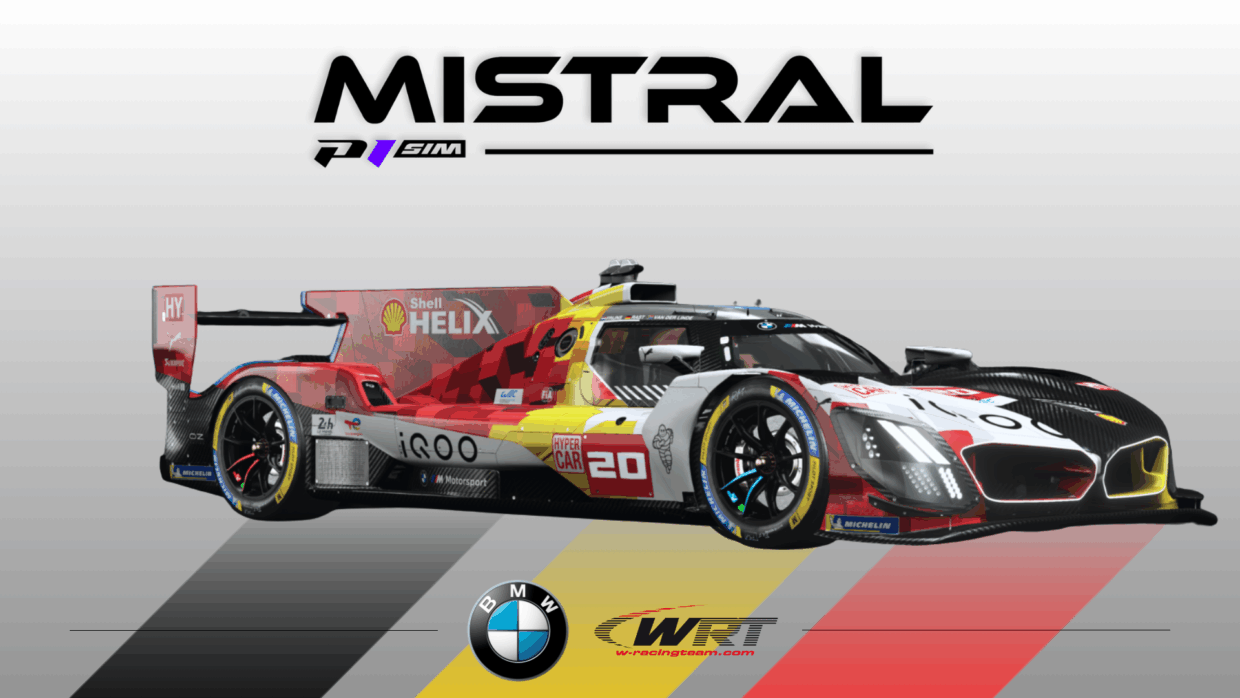
Circuit of the Americas: A Technical Challenge
Pedal Calibration
Pedal calibration is crucial for achieving optimal response. For the BMW M Hybrid V8, a calibration of 101 kg is indicated. However, this value depends on our position in the cockpit, our musculature, and driving comfort. It is important to note that the 101 kg setting is an indication and not an absolute reality. The main goal is to have a balance between comfort and managing the power applied to the brake pedal. It is essential to adjust this calibration to match your personal feel and driving style to optimize control on a demanding circuit like COTA.
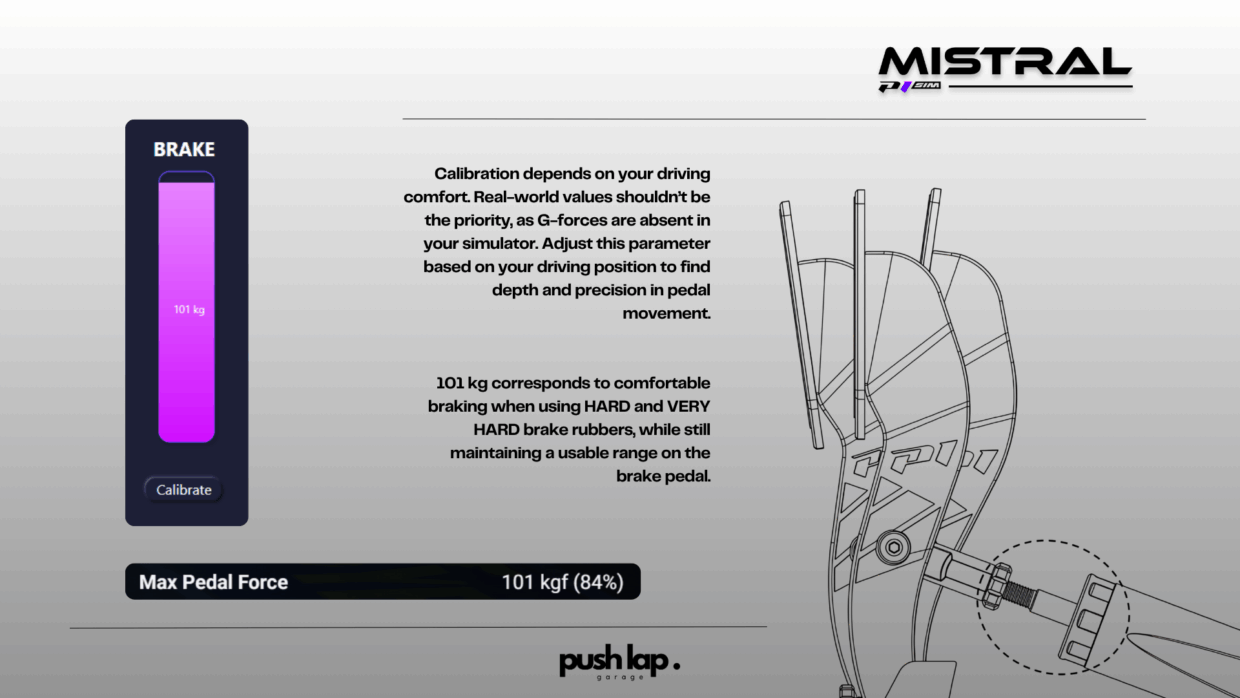
Brake Elastomer Selection
The choice of brake elastomers primarily depends on your driving comfort. For the BMW M Hybrid V8, it is generally recommended to use HARD or VERY HARD compounds to replicate the stiffness and responsiveness needed to meet the braking demands of a WEC race car.
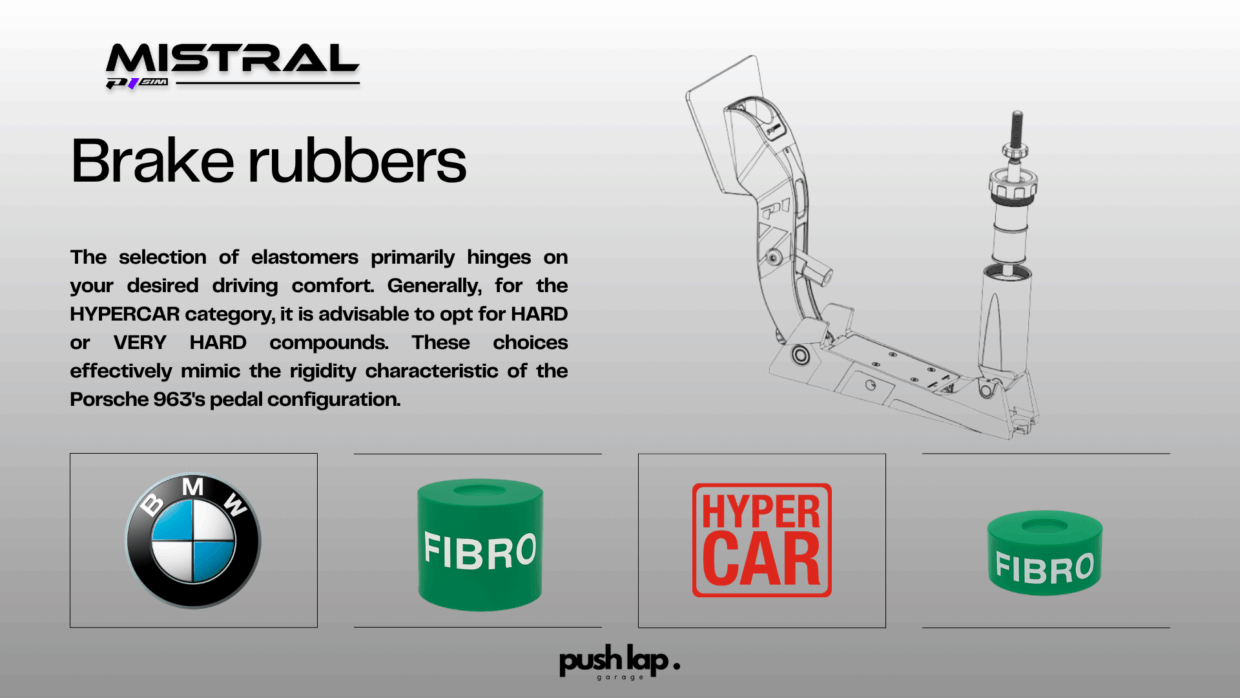
Force Feedback Settings
In Game
Force feedback (FFB) in the game is a crucial element for an immersive and realistic driving experience. For the BMW M Hybrid V8, it is recommended to set the overall FFB strength to around 64%. This setting offers a solid foundation for feeling the forces exerted on the steering wheel, while avoiding excessive fatigue. With a steering wheel rotation range of 420 degrees, this setting allows for optimal precision when navigating the technical turns of the COTA circuit. This 420-degree rotation enables us to fully utilize the entire range of the BMW M Hybrid V8’s physics, reaching the steering lock, which is a sign of proper use of the vehicle’s physics. It is also advisable to disable the automatic steering rotation options to have full control over the direction, which is essential for precise and immersive driving.
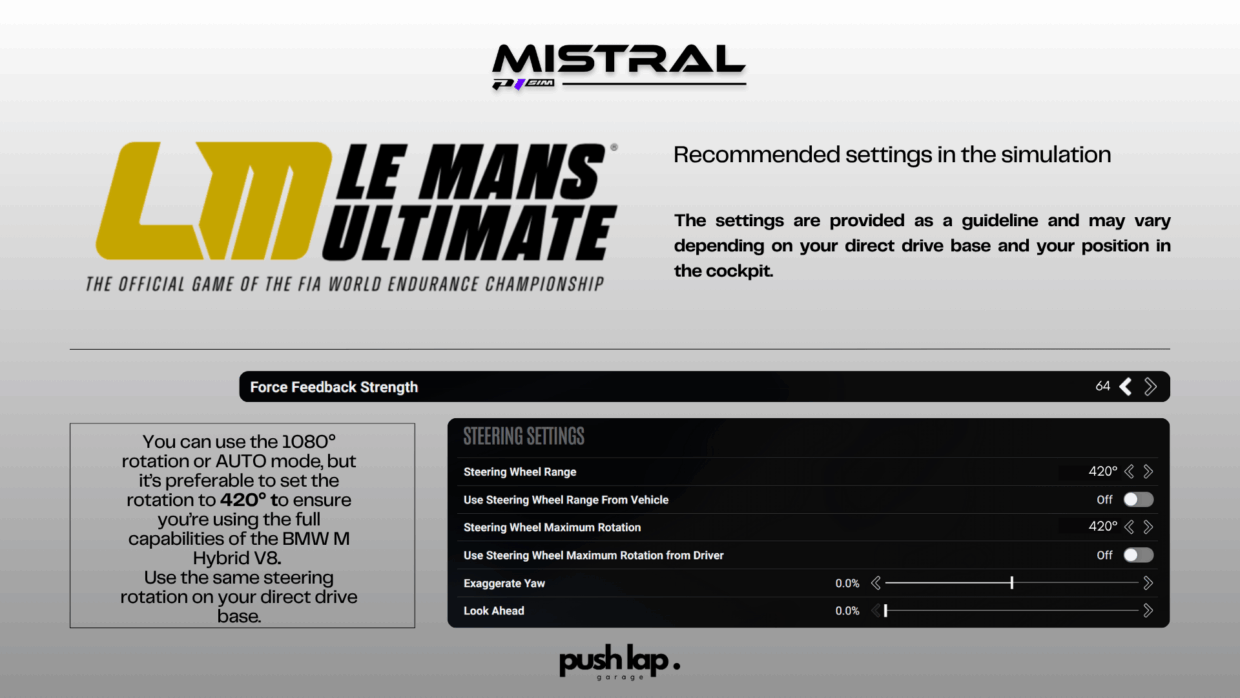
Importance of Fine Force Feedback (FFB) Details with the ClubSport Base
To achieve fine details and a realistic driving experience with the 12 Nm ClubSport base, it is essential to properly adjust the force feedback. A setting of 55% is recommended for this specific base. This setting allows you to capture the subtleties of the circuit, such as variations in the track surface, loss of traction, and aerodynamic forces. By focusing on fine details, you can better understand and react to the forces at play, thereby improving your spatial awareness and responsiveness on the track. This is particularly important on a technical circuit like COTA, where every detail can make a difference in terms of performance and precision.

Virtual Position in the Vehicle
The virtual position in the vehicle is an often-overlooked aspect, but it is crucial for achieving a realistic and optimal driving sensation. To validate the position that balances the vehicle’s physics, I conducted a rigorous test using telemetry software independent of the Le Mans Ultimate simulation. Of course, this test reflects my driving style and may vary depending on your driving. However, it demonstrates that the virtual driver’s position significantly influences the physics.
To validate this test and find the ideal position, I perform this test by exiting the pits for each session, with new tires each time and two laps to thoroughly understand not only the evolution of surface temperatures but also that of the carcass and pressures. The sequence of turns 2, 3, 4, and 5 are quite revealing as they immediately and sustainedly stress the tires.
Through the attached image, I communicate the four most important laps: the 102/0, which is the default position, 150/0 and 50/0, which I consider the extremes in position, and 86/-2, which is the ideal value.
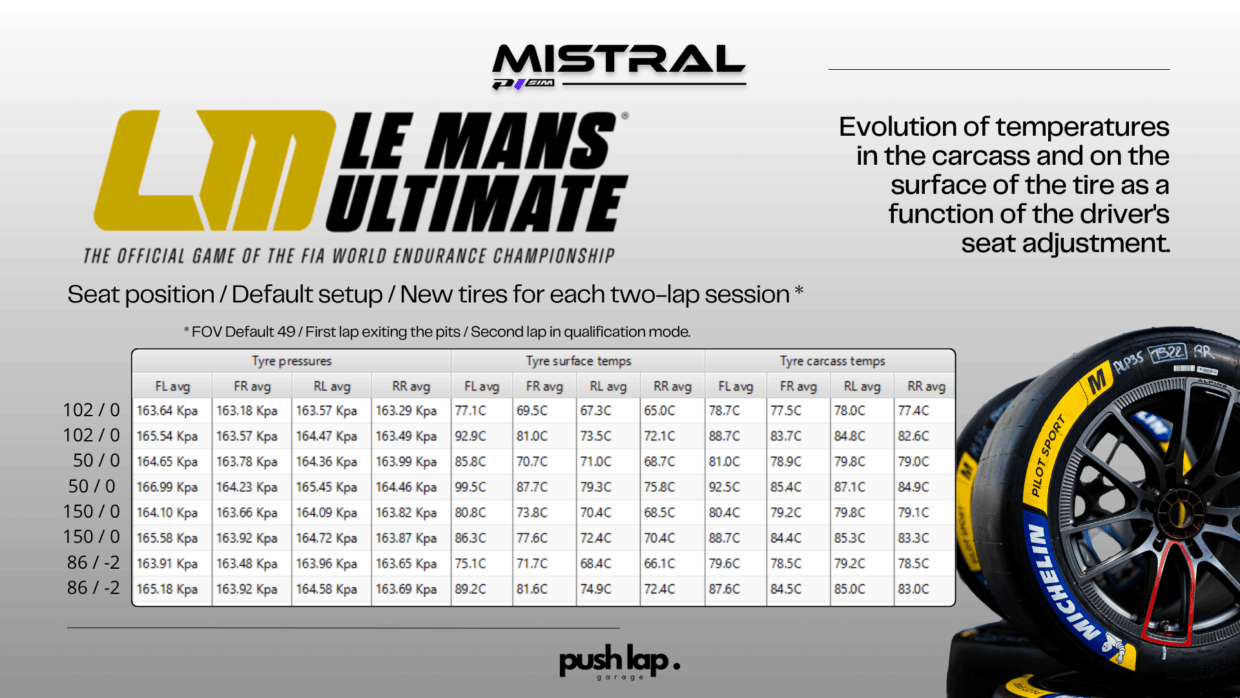
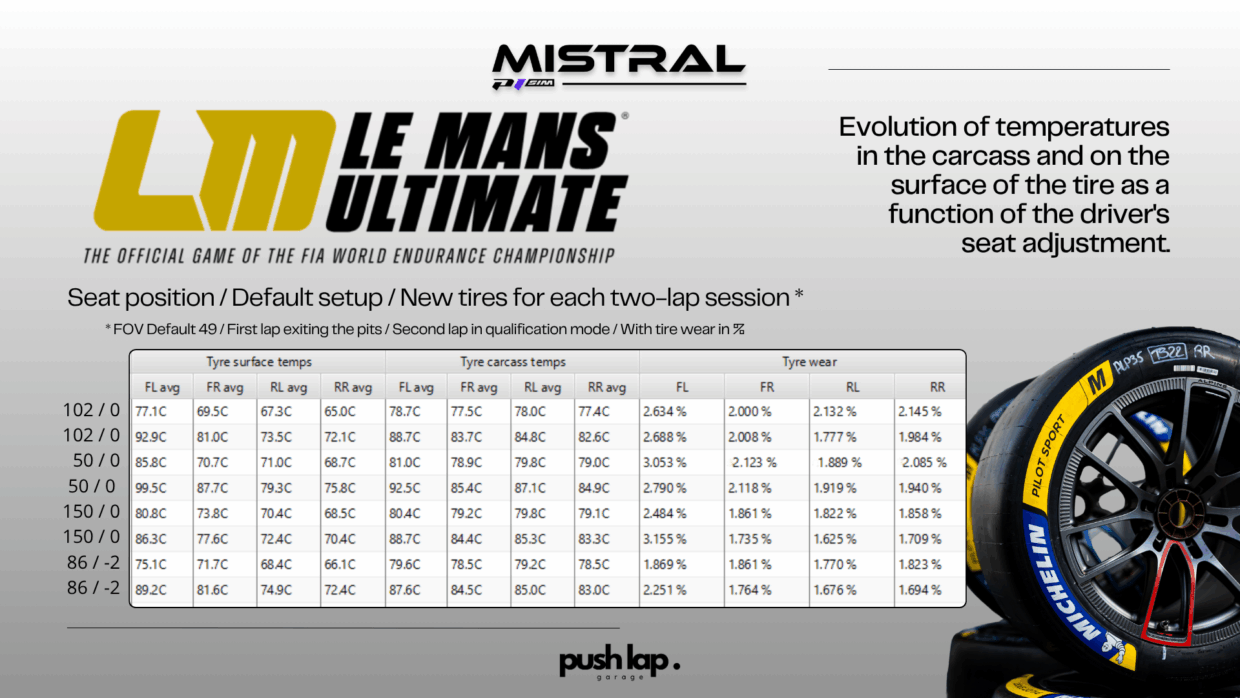
After several sessions, I manage to find a balance with the value of 86 for depth and -2 for seat height. A stable surface temperature is a sign of correct stress, which confirms my feel through the steering wheel. This position optimizes weight distribution and balance, thereby improving responsiveness and driving precision. I plan to devote a full article to this topic soon.
But what immediately appears is a consistency and ease in the sequence of turns. As if my ClubSport DD base was perfectly calibrated.
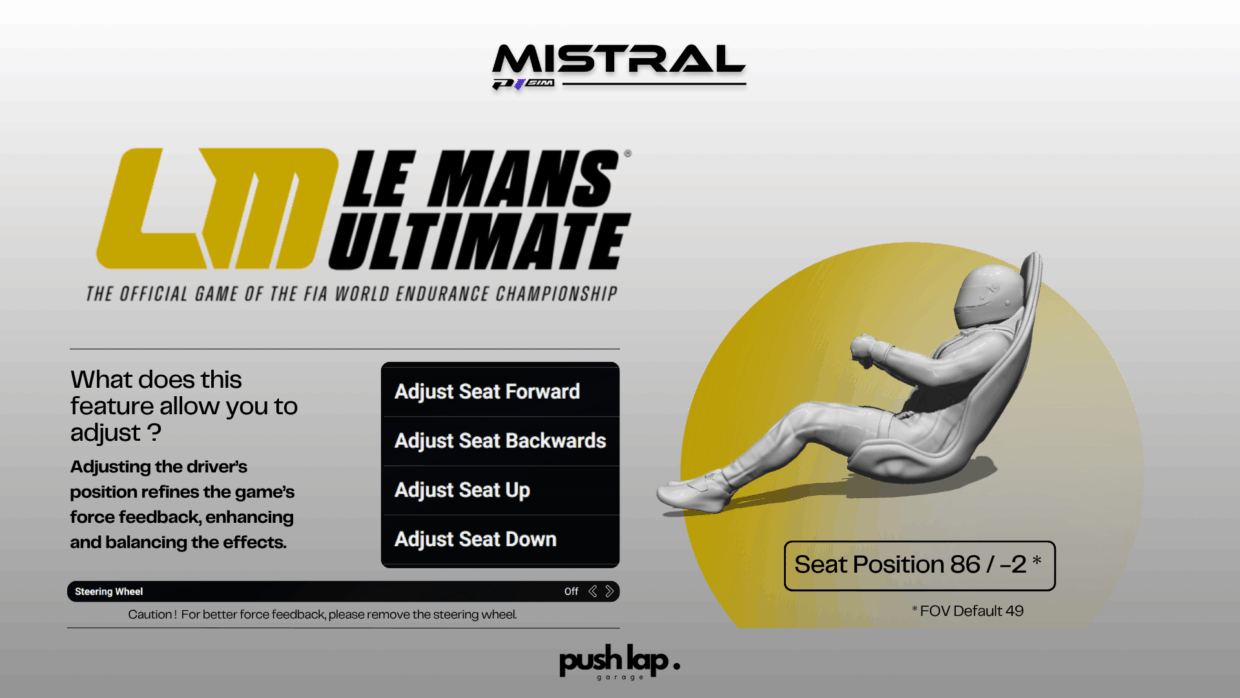
Energy Management and Regenerative Braking
Effective energy management is crucial for maximizing the performance of the BMW M Hybrid V8, especially on a demanding circuit like COTA. The hybrid technology in the BMW M Hybrid V8, similar to other LMDh prototypes, allows for efficient energy recovery and deployment, which is essential for maintaining competitive lap times and managing tire and brake temperatures throughout the race. It is important to note that the following parameters are indicative and should be adapted based on your driving style. Simulation is not reality, and each sim racer may need to adjust these settings to better fit their unique braking style and preferences.
Energy Balance

- Race Mode: In race mode, an optimal balance between energy recovery and deployment is 102 kW for recovery and 30 kW for deployment. This balance helps maintain constant temperatures in the brakes and tires, ensuring optimal performance.
- Qualifying Mode: In qualifying, it is advisable to find a lower recovery setting while deploying all the battery’s energy in a single lap to maximize performance.
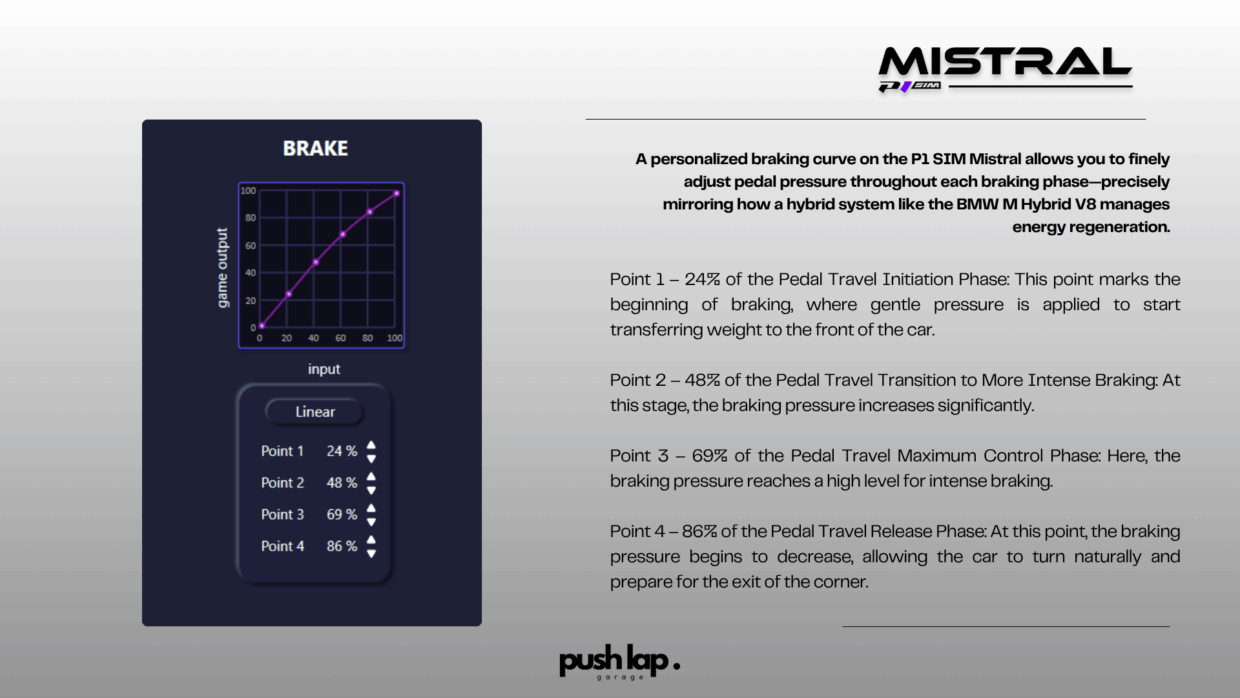
Turn 1
- Description: Tight left turn following a long straight.
- Braking Curve: Start with a gentle initiation (Point 1 – 24%) but quickly increase to maximum braking (Point 4 – 86%).
- Energy Recovery: 15 kW. Intense braking allows for significant energy recovery.
Turn 4
- Description: Moderately fast right turn.
- Braking Curve: Moderate braking (Point 2 – 48%).
- Energy Recovery: 5 kW. Moderate braking stabilizes the car.
Turn 7
- Description: Moderately fast left turn.
- Braking Curve: Moderate braking (Point 2 – 48%).
- Energy Recovery: 4 kW.
Turn 11
- Description: Tighter left turn.
- Braking Curve: Intense braking (Point 3 – 69%).
- Energy Recovery: 8 kW. Intense braking for approaching the tight turn.
Turn 12
- Description: Right turn uphill.
- Braking Curve: Maximum braking (Point 4 – 86%).
- Energy Recovery: 10 kW. Intense braking to manage the uphill.
Turn 13
- Description: Moderately fast left turn.
- Braking Curve: Moderate braking (Point 2 – 48%).
- Energy Recovery: 4 kW.
Turn 19
- Description: Less demanding left turn.
- Braking Curve: Light braking (Point 1 – 24%).
- Energy Recovery: 2 kW.
Turn 20
- Description: Final right turn before the main straight.
- Braking Curve: Light braking (Point 1 – 24%).
- Energy Recovery: 2 kW.
Conclusion
The BMW M Hybrid V8, with its advanced hybrid system and aerodynamic design, offers a distinctive driving experience in the World Endurance Championship. Every element, from steering wheel rotation to seat position and braking curve in the Sim Hub, is extremely important. Each detail, when combined, allows you to get the most out of the simulation’s physics. It is essential not to neglect any aspect and to prepare your race weekend with a certain methodology.
By fine-tuning your P1 SIM Mistral pedal setup and understanding the car’s energy dynamics, you can unlock its full potential on the demanding Circuit of the Americas. The combination of precise setup adjustments, strategic energy management, and detailed force feedback settings will enable you to harness the capabilities of this remarkable LMDh prototype and achieve outstanding results on the track. It is also crucial to note that the P1 SIM Mistral pedals are a key element, but without the other elements, they cannot demonstrate all their qualities and capabilities. As often, it takes time to reveal the qualities of the equipment as well.
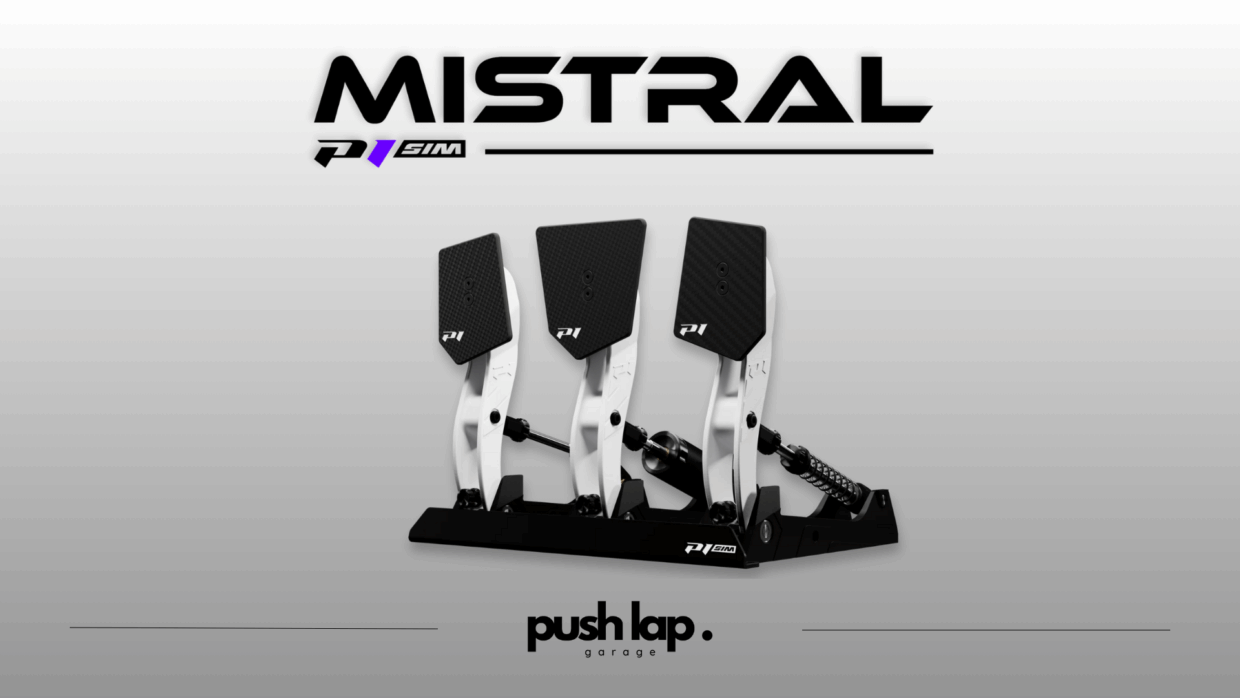

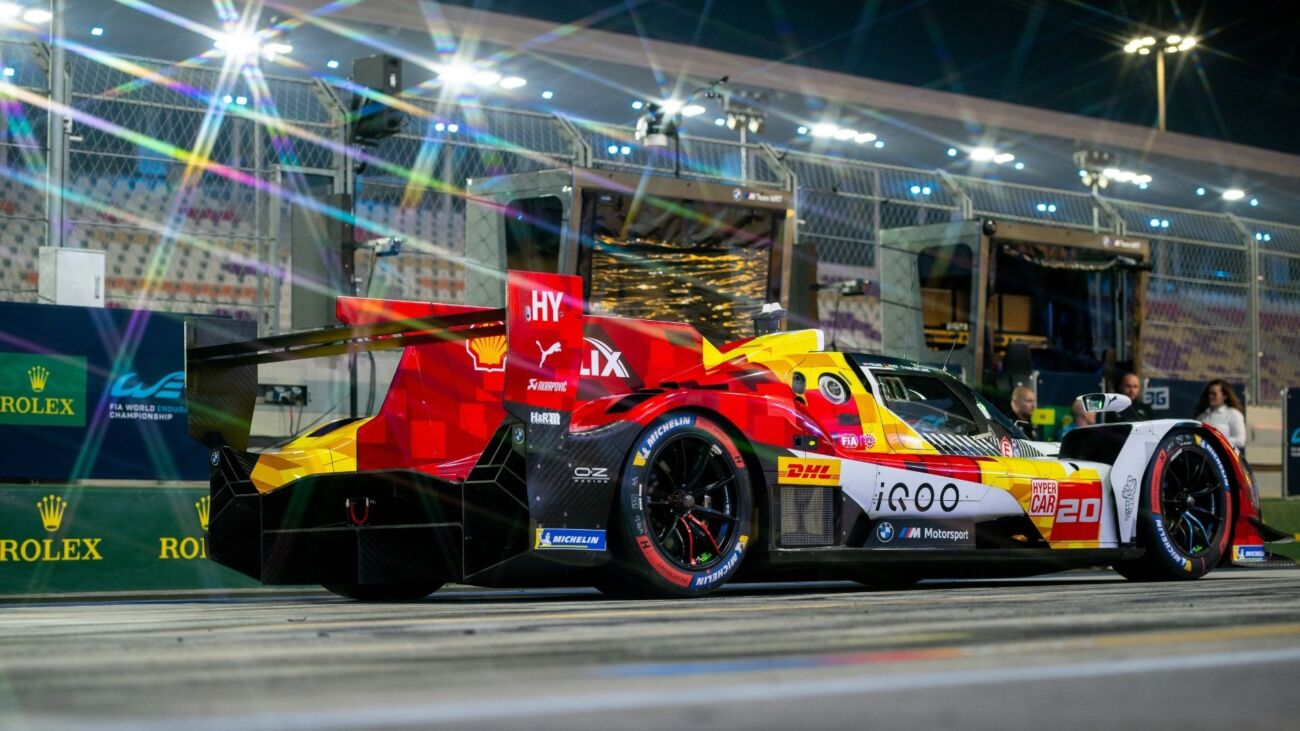
Leave a Comment